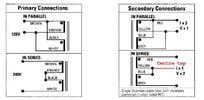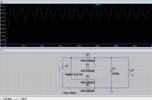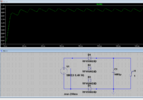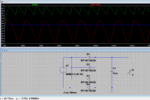Hi, first post so be gentle please.
I over speced my first design so went back to the drawing board and did some more reading
so now I'm looking at a toroidal with two secondary outputs at 6v 4.4a each. now if my maths is correct it should be(in parallel) 8.484v and 8.8a into the recitifier. after the rectifier bridge my maths says 7.284v and 8.8a then into 2 4700uf 16v caps(in parallel)then into the ldo regulator which outputs 5v 5a it says. Then the 2 caps again and a bleeder resistor 1k 5w(parallel)
so first question is this ok or needs changes
is the voltage change from 7.2 to 5 on the regulator too much and create a massive amount of heat?
i do have other questions but no point asking if this circuit is rubbish and dangerous
cheers
I over speced my first design so went back to the drawing board and did some more reading
so now I'm looking at a toroidal with two secondary outputs at 6v 4.4a each. now if my maths is correct it should be(in parallel) 8.484v and 8.8a into the recitifier. after the rectifier bridge my maths says 7.284v and 8.8a then into 2 4700uf 16v caps(in parallel)then into the ldo regulator which outputs 5v 5a it says. Then the 2 caps again and a bleeder resistor 1k 5w(parallel)
so first question is this ok or needs changes
is the voltage change from 7.2 to 5 on the regulator too much and create a massive amount of heat?
i do have other questions but no point asking if this circuit is rubbish and dangerous
cheers
Last edited:




